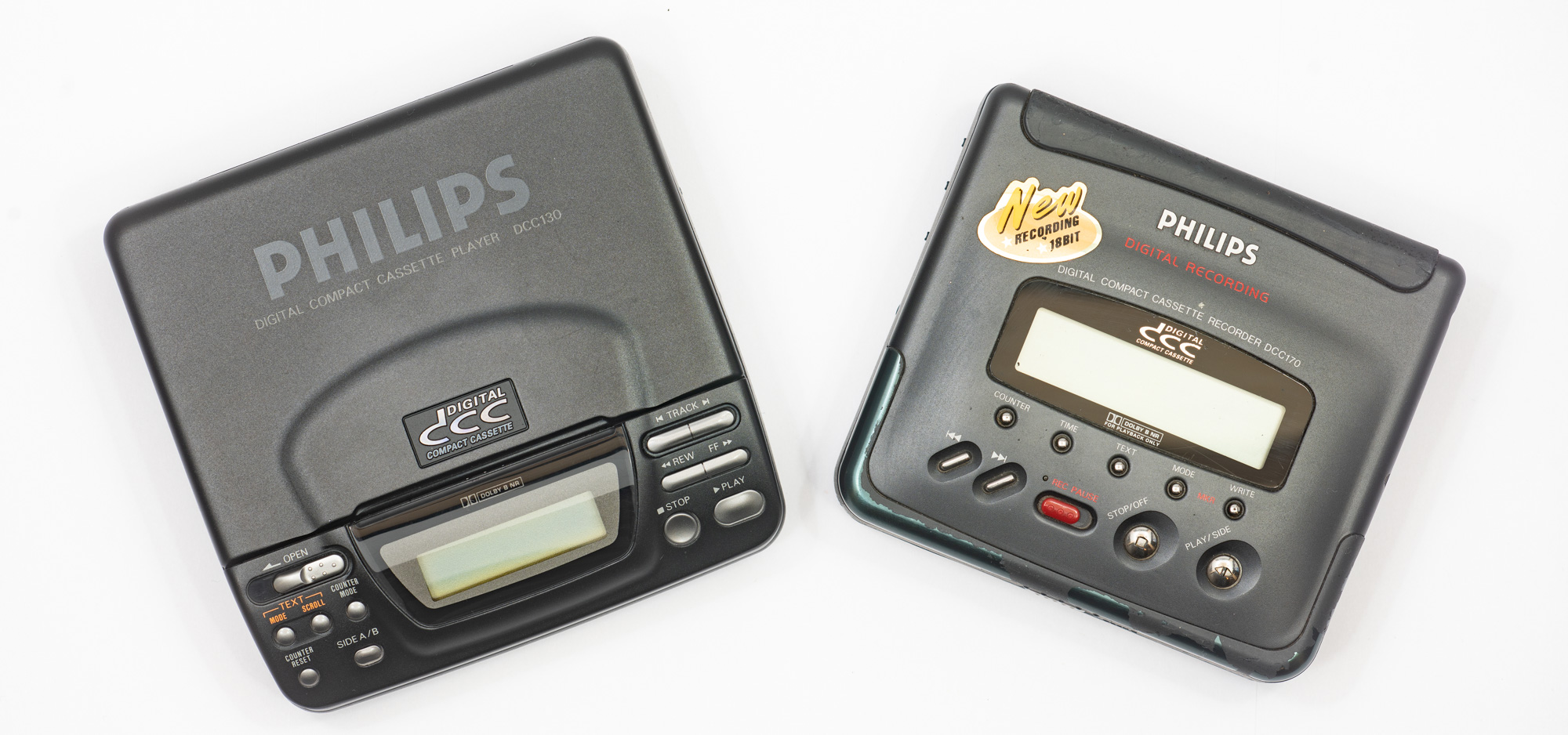
Then I repaired them (where without it), and at the same time studied the history of Philips DCC a little further. The fact that at the end of 1992, at the start of sales, a portable DCC device did not appear - this was a serious drawback of the Philips format. Sony's competitor, MiniDisc, on the other hand, started with a heavy, uncomfortable, but portable device around the same time. DCC's main problem was with magical magnetic heads. To fit a digital audio stream with a bit rate of 384 kilobits per second on a regular magnetic tape, the data was written in nine parallel tracks (eight - data, the ninth - service track). This means that where an ordinary tape recorder has two magnetic heads (for the left and right channels), it was necessary to place a block of eighteen, nine each for reading and writing. And this was for recording on one side of the tape, and for the other side, auto-reverse was used.So, it would never have been possible to introduce the traditional head-turn auto-reverse into portable equipment. I had to resort to non-trivial technical solutions.
I keep a diary of a collector of old pieces of iron in Telegram .

Previous related articles:
Philips DCC, The Loser
Cassette Digital Cassette as an Audiophile Format
Philips DCC130

Okay, the solution was trivial: the recording function was not implemented in the first portable. In the assembly for reading the data, I still had to place 18 heads, across the entire width of the tape, so that both sides could be played, simply by changing the rewinding direction. This spring, I find such a device in the "untested" state, and look how cool it is!

By the beginning of the nineties, analog portable cassette technology had already taken place: all the legendary devices had already been released, ahead - only a reduction in price and design delights. We have already reached the ultimate compactness of the case - a little more than a cassette. Compared to all of these achievements, the Philips DCC130 is heavy, but very pleasant to the touch. All-metal body, large buttons are to blame. Like the first mini-disc player, the portable digital recorder commands respect for its solid design approach. Let's compare:
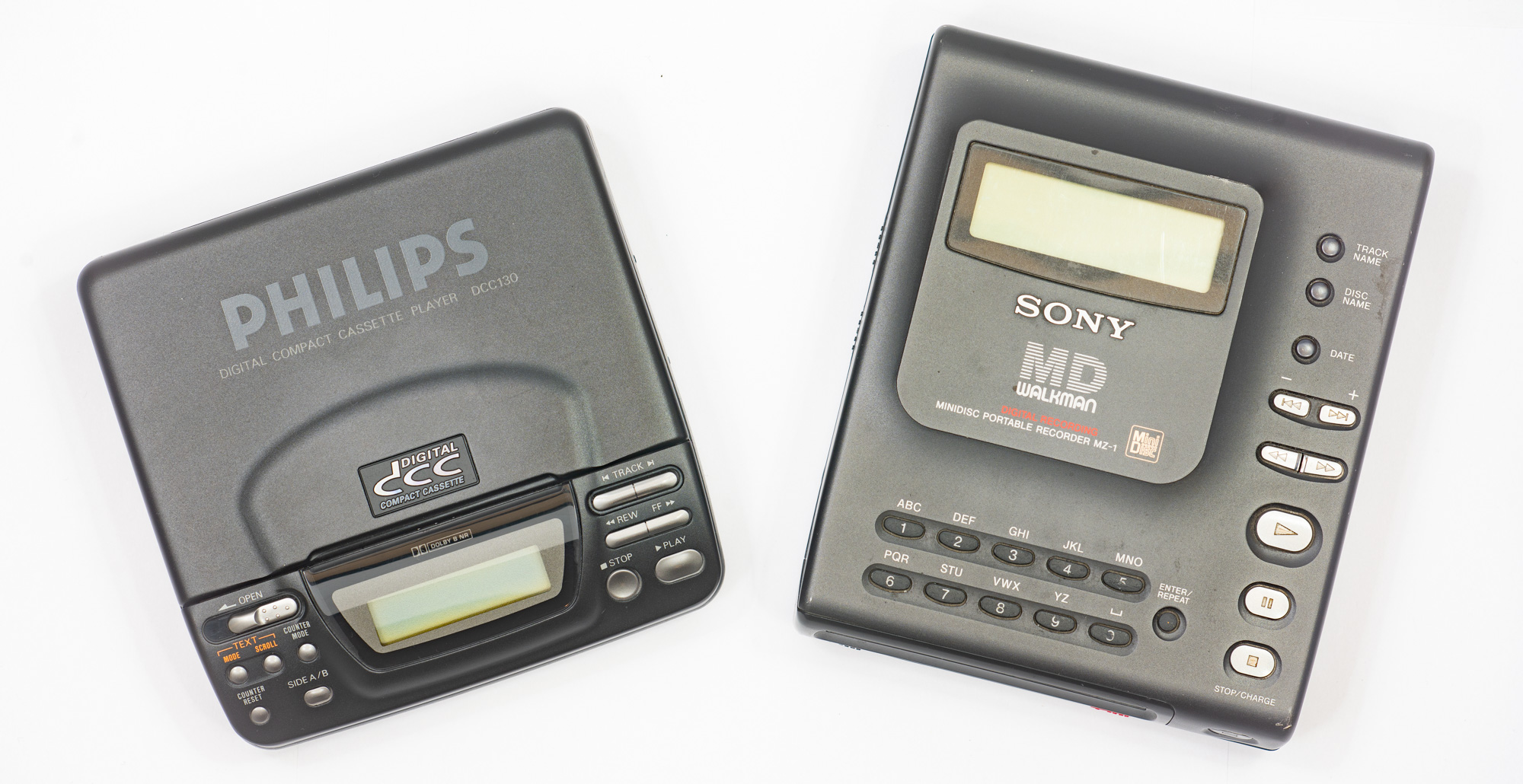
There is something in common, only the Sony MZ-1 can record music to a minidisc, and the DCC130 only plays back. Their battery life is about the same: two hours. Batteries are both proprietary, you just can't replace batteries on the go. Sheer misery, and you would have to buy a stationary machine (for $ 800 or $ 1,440 after adjusting for inflation) to record tapes. In addition to being portable ($ 500 or 900 modern) to listen on the go.
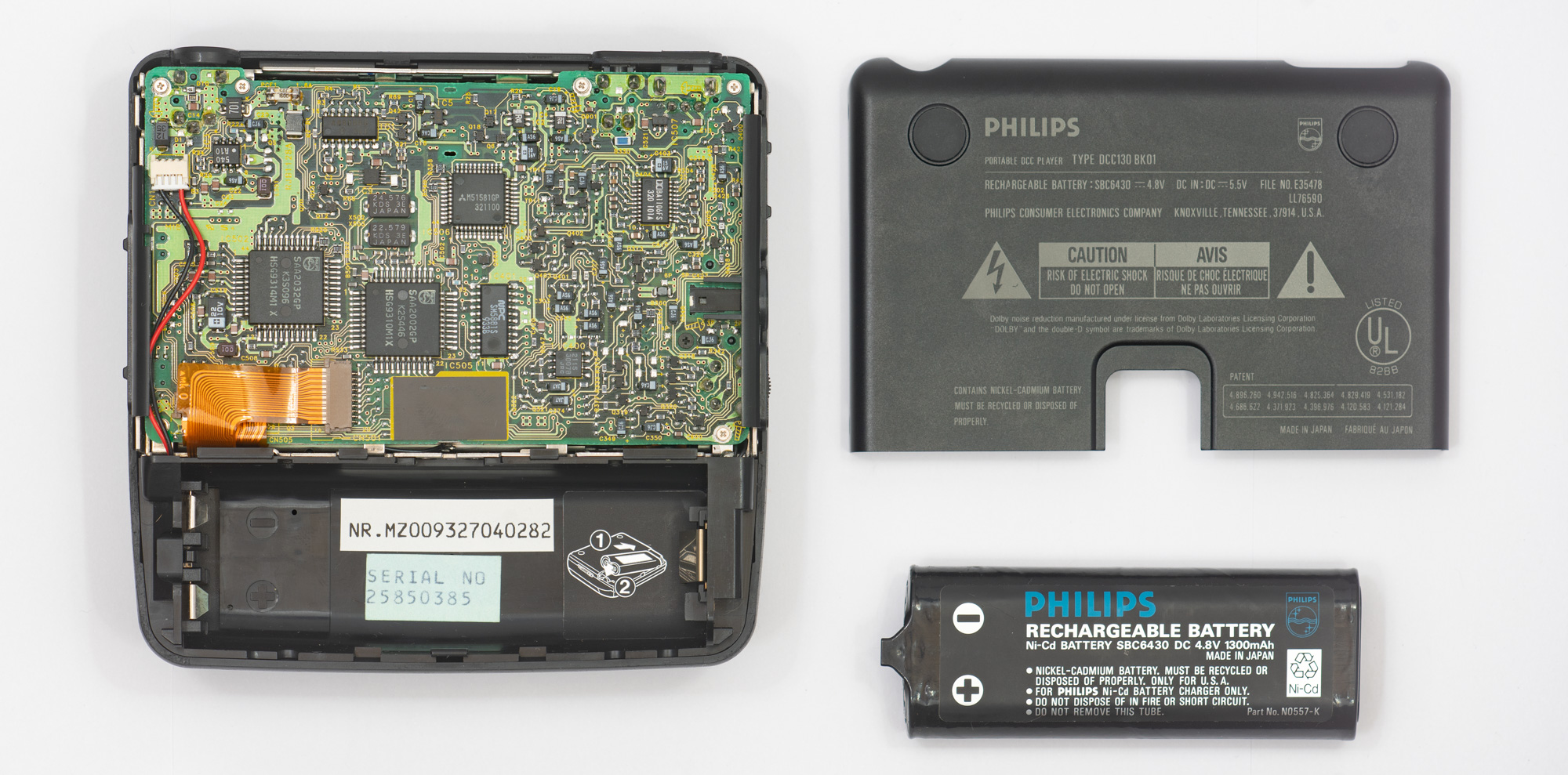
The mechanics of the DCC tape recorder are no different from the usual: the pressure rollers, tones and gears are the same. The difference is in the special block of magnetic heads for reading and in the digital signal processing circuit. There were also problems with it: firstly, it did not work (according to those technologies) to make it compact. Secondly, it consumed a lot of electricity. The creators of the minidisk also faced this: the first two generations of recorders and players did not know how to operate on ordinary batteries. Here is the same problem: the Philips DCC130 uses a 4.8 volt nickel-cadmium battery. Another forced saving: the battery charging circuit did not fit into the player, they made a separate device (which I do not have).
The player turned on after I short-circuited the blown fuse on the board. Apparently, someone else's power supply unit with a different voltage or with the wrong polarity was stuck into it.
Naturally, this was not the only malfunction: if the tape recorder is 28 years old, it must have a "rotten" drive belt connecting the motor and two tones. The video above shows an informative instruction from DCC's chief curator, founder of the DCC Museum, Ralph Porankiewicz. Why is he fixing a player on the beach? I don’t know, don’t ask. Like the Sony MZ-1, the first Philips DCC portable player was more of a demo. Funny battery life, half a kilo weight, complex battery charging circuit. Finally, let me compare this player with the most compact cassette player in my collection from Panasonic. In a sense, they are relatives: electronics in the DCC-portable were developed by Philips, mechanics - by the Japanese conglomerate Matsushita.

Philips DCC170
Philips DCC170 is the third and latest generation of portable digital cassette devices. This is already a full-fledged device with the ability to record digital sound on DCC, play back digital and conventional analog cassettes. To explain what is so difficult in recording, I will show a conventional image of a block of magnetic heads for a stationary digital tape recorder:

This is an assembly of nine heads for reading, nine for recording and two more for playing conventional cassettes. You can't turn your head over in a portable device, so to implement the recording function, we had to make a new assembly of forty (!) Elements: 18 heads for reading and writing digital data on each side, plus two on the side for playing analog cassettes.

The DCC130 was simpler: read-only, and even conventional cassettes were read by "digital" magnetic heads. Naturally, it was necessary to add a circuit for digitizing the signal from the analog inputs, lossy compression using the PASC protocol and conversion for subsequent recording. Here's what happened:

The display and buttons have moved to the top panel, the device has turned out to be quite compact, but still larger than a conventional cassette player, due to a large nickel-cadmium battery. At that time, the second and third generation minidisc devices used more capacious lithium-ion batteries. Here, the battery life has not grown much: 2.5 hours of playback. Or records, it doesn't matter.

Although the DCC170 already fits in a spacious pocket, it is almost twice as thick as a conventional cassette deck. This is due to the battery, display and two boards with electronics instead of one. Everything worked for my DCC170, but I had to change the drive belt. To do this, in this model you will have to work with a soldering iron: this is the only way to remove one of the two boards. This is how the player looks from the inside:
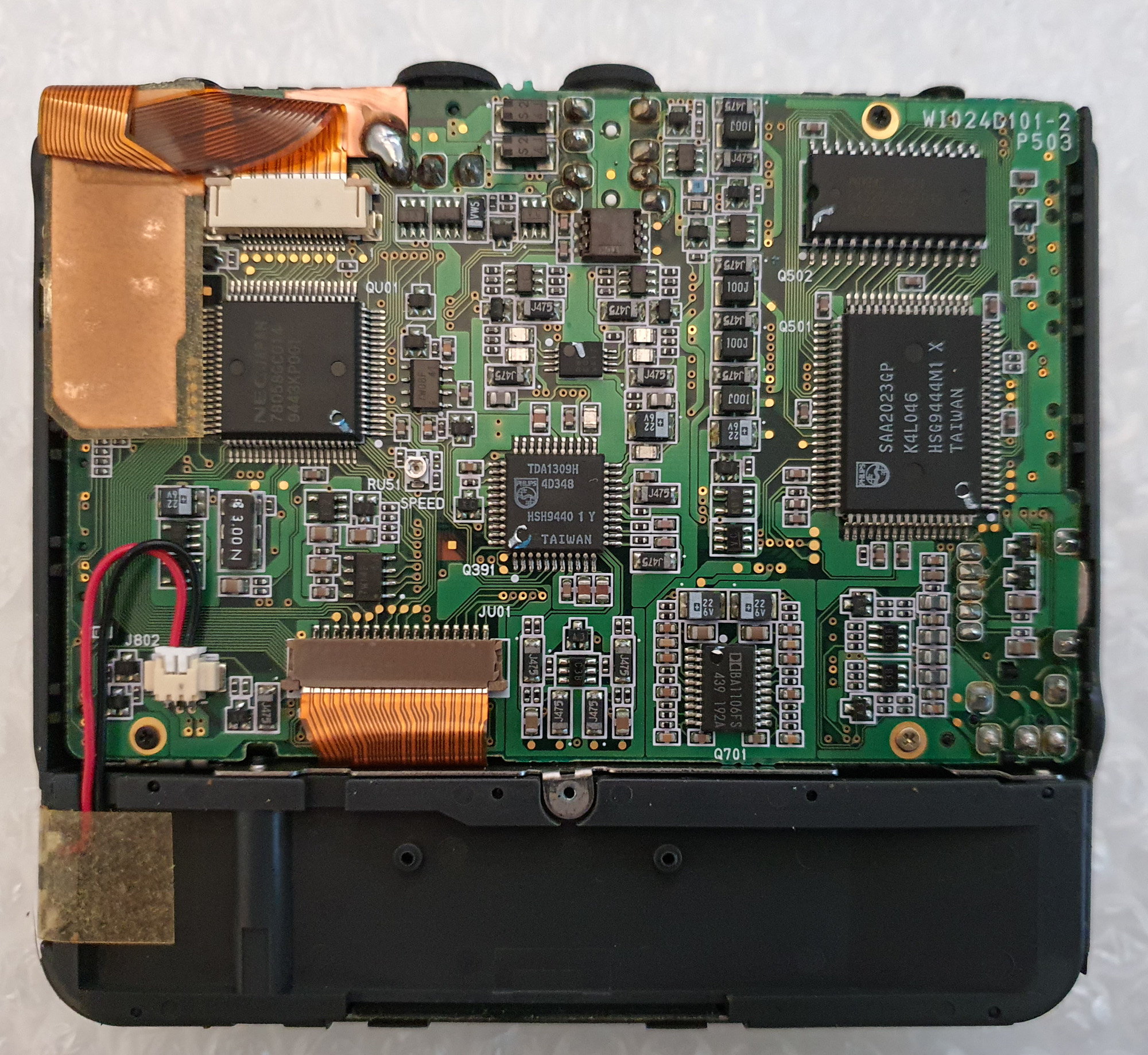


This is how the Panasonic RQ-SX33 cassette player looks like, the mechanical part is almost the same.
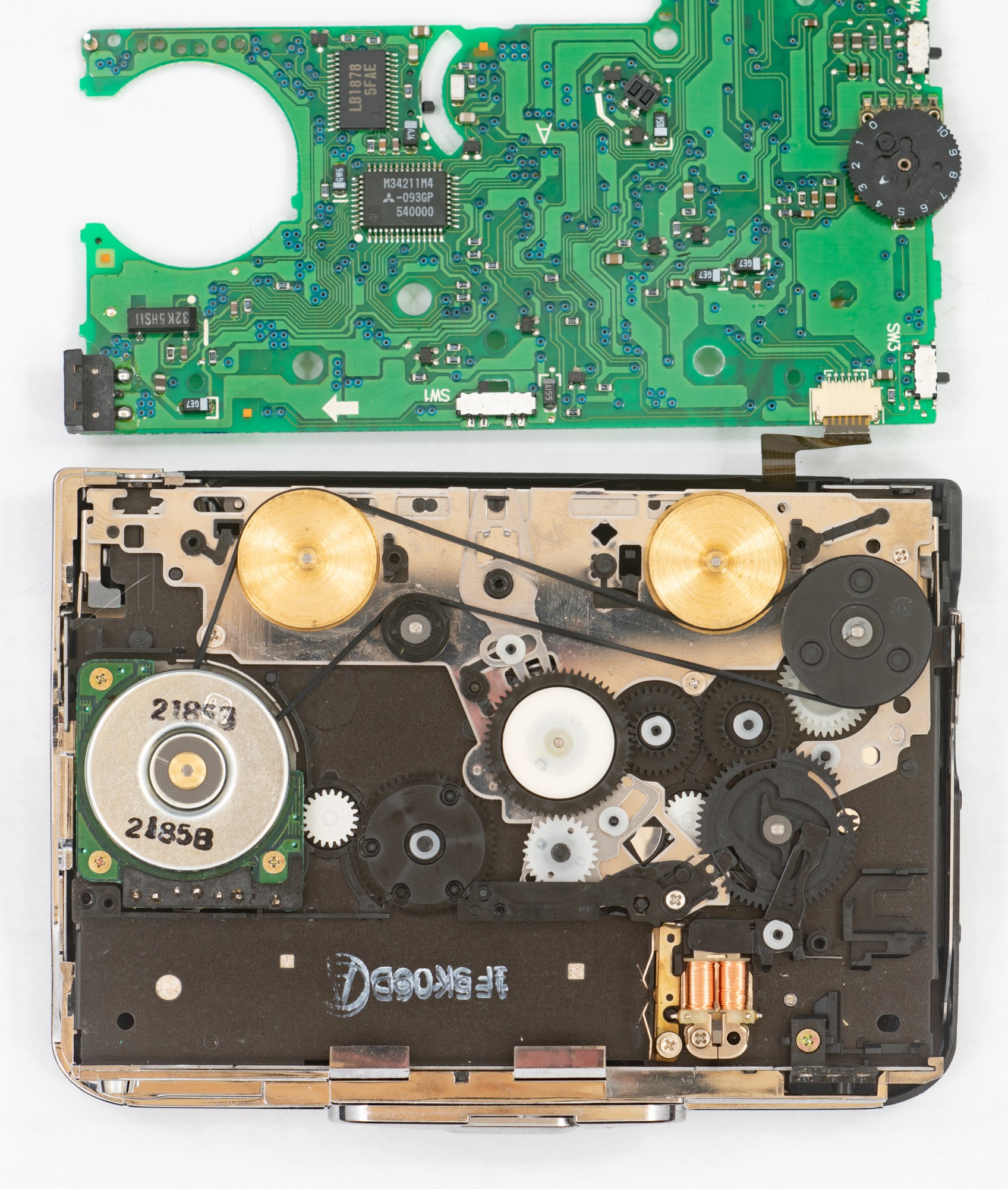
As a result, I got a slightly life-beating but fully working digital cassette portable. Its set of features roughly corresponds to a mini-disc recorder: recording from line and microphone inputs, as well as from digital (optical or coaxial). Reproduction of digital and analog cassettes. Autoreverse, of course, without it DCC basically does not work. Large screen displaying tags, but only on branded cassettes. Although custom tags can be assigned to the DCC951 stationary recorder, they will not appear on a portable device.

We even managed to “swing” the original rechargeable battery: at first the player worked from it for literally 10 seconds, but then we managed to achieve two hours, almost like for a new battery. What can this device be used for? Oddly enough, it is quite suitable for recording digital cassettes, even if you have a hospital.

Burn and misery
I once wrote on reddit a sequence of steps for recording a digital cassette. I will give the translation here:
- Fix the recorder. Something is bound to be broken!
- Choose the right ribbon. New, sealed - no problem. In old ones, you will have to clean the pad that presses the tape to the head. Otherwise, the tape will squeak and the recording will fail.
- . ? , ? : . , . , .
- , — ( ). , , 44 /24 . , .
- Write it down! Insert the cassette, rewind to the beginning, do a lead-in procedure (sort of like formatting a floppy disk), start recording, start playback on the source. Add track markers manually, do not forget to program the transition to the second side of the tape. Add a tag that rewinds the tape to the beginning at the end of the track. Done!
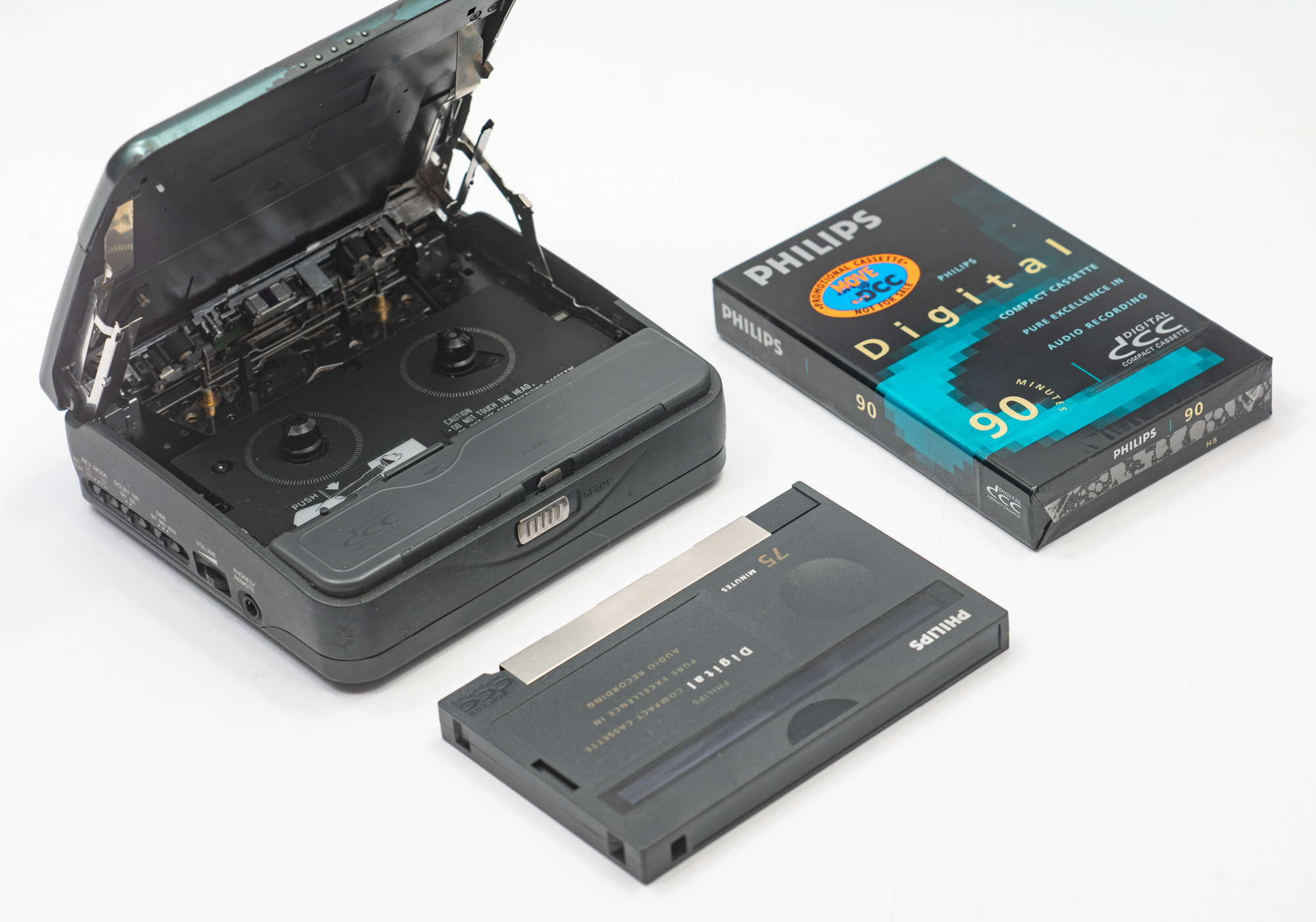
Okay, aside from the inevitable features of the DCC format, the portable DCC170 is quite a pleasant device. He has a powerful headphone amplifier, convenient control, a full set of inputs and outputs for connection to any external equipment. Unless modern switching power supplies are not to his liking: pickups penetrate the amplifier. The standard linear power supply unit is devoid of this problem.

One of the features of the DCC format in general and the third generation of devices in particular is support for resolutions "slightly better than CD", and specifically digital audio with a bit depth of 18 bits. In theory, this gives an improved dynamic range when recording. In practice, especially in portable technology, the theoretical advantages are "eaten away" by the noise of the analog part. This is what I wanted to measure. Below are the results of measurements of the DCC170 player through the linear output in the RMAA program.

And they are practically indistinguishable from the parameters of the Philips DCC951 stationary deck. Let me remind you that this is a portable device made in 1994. Nobody even thought about "high-definition sound" then. Portable CD players often failed to realize the full potential of the CD. The parameters demonstrated by Philips DCC170 were then achievable only in expensive stationary equipment. All the portable minidisk devices I have studied are significantly inferior to this ancient artifact in terms of dynamic range: instead of 101 dB, there are at best 92, and more often 86-88.

This is how the portable hi-end of the mid-nineties turned out, unexpectedly for me. The only thing the player was not capable of was to play ordinary analog cassettes. More precisely, it reproduces them, but you will not like the result. The rubber pressure rollers in the DCC170 mechanism are microscopic and also tired from time to time. The detonation coefficient reaches 0.2%, which is noticeable by ear and very unpleasant. I tried to replace the videos with new ones, but it didn't help. Digital cassettes do not care about this unevenness, as there is error correction. However, okay, for ordinary cassettes I have ordinary players .

Sony's minidisc players have evolved from large and inconvenient devices to ultra-compact and feature-rich devices. The Digital Compact Cassette portable did not have time. It had a fundamental limitation in the form of the dimensions of the media - you can't make a player smaller than a cassette. Another couple of years of life, and I think the creators of the format would be able to create truly miniature devices. But not destiny. I also got two more artifacts for listening and recording on this rare, and despite the oddities, somewhat attractive ancient digital format. Collecting DCC, perhaps, is over here. But the suffering is not over, in this format they are endless. I'll tell you more about them sometime.